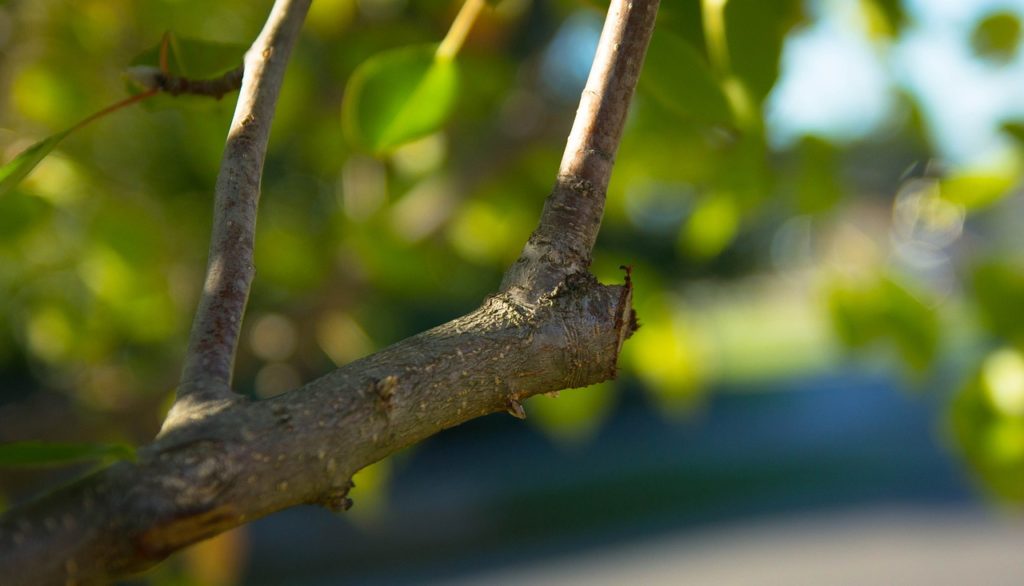Pruning is a practice that involves the removal of branches or stems from a tree or shrub. It is an effective method for maintaining plant health, and establishing branching patterns. But while pruning offers numerous benefits, there are select periods throughout the year when it is best utilized. The following examines when pruning is most ideal, and when pruning should be avoided.
Winter Pruning
Pruning during winter is a common practice. As the temperatures drop, many plants enter a dormant state, shedding their leaves. This makes it easier to discern the plant’s shape. It also exposes any encroaching limbs, weak crotches, or broken branches that may be present within the tree or shrub.
Pruning during this period is less stressful to plants, as it allows them more time to seal any pruning cuts before the growing season begins. There is also a reduced risk of infection or insect infestation.
Winter pruning often invigorates trees and shrubs, resulting in a burst of new growth in spring. It is especially ideal for trees and shrubs that flower in mid to late summer, as it will enhance their vibrancy and growth.
Examples of trees that benefit from winter pruning include:
Bradford Pear · Crabapples · Poplar · Spruce · Junipers · Sumacs · Cherries · Plums · Honey locust · Cypress
Examples of shrubs that benefit from winter pruning include:
Barberries · European Hornbeam · Euonymous · Mallow · Hydrangeas
Other tree species such as maples, birches, dogwoods, walnuts, and elms will ooze sap when pruned in winter. This will not harm the tree, but it will cause sap to drip onto any nearby surfaces or vehicles.
Spring Pruning
Trees and shrubs can be pruned in early spring, just before they break dormancy. This can assist in establishing branching patterns for any new growth. Plants are also less likely to incur cold damage during this period. Deciduous plants will still remain bare, making it easier to detect any encroaching limbs, weak crotches, or broken branches.
Summer Pruning
Summer pruning is ideal for trees and shrubs that bloom in spring. Once their flowers have faded, they can be properly tended to. Pruning will help enhance their flowering. Summer is also the best time to prune for corrective purposes. Healthy limbs will be flush with live growth, making it easier to detect defective branches. Heavier limbs will also be exposed, and it will be easier to thin out any branches that are too thickly foliaged.
When to Prune Evergreens
Evergreen plants do not shed their leaves, but they approach a near-dormant state during the winter months. Broadleaf evergreens are best pruned in late winter or early spring. They can also be pruned in summer. Flowering broadleaf evergreens should not be pruned until after they have bloomed. Conifers can be pruned for the first few years of growth to help establish their shape. Once two or three years have elapsed, they can be allowed to develop naturally. Severe pruning of conifers can stunt their growth, and destabilize the tree.
When to Avoid Pruning
Refrain from pruning in late spring and early summer when leaves are expanding. Pruning during this period can hinder plant growth. Pruning in the fall should also be avoided, as it can stimulate new growth that is unable to harden before the winter frost occurs. As the cold sets in, the tender growth will incur significant damage, often necessitating its removal in the spring. Trees and shrubs should not be pruned during hot dry periods or extreme winter cold. This can render trees susceptible to drought and other seasonal injuries.
Pruning Tips
- Dead, damaged, and diseased branches should be promptly removed, regardless of the season.
- When pruning dead or diseased branches, make cuts into healthy wood, well below the affected area.
- Remove any branches that are dangling over houses, parking areas, or walkways.
- When pruning encroaching limbs, always remove the smaller, weaker one.
- Thin branches periodically in order to allow sunlight and air to reach the center of trees and shrubs.
- Avoid tree topping, as this will destroy the tree’s structure, and attract decay organisms. It will also promote the development of epicormic sprouts, which become increasingly precarious as they grow larger; eventually, as the rot in the wound becomes more extensive, the branch will snap.
- Do not leave any stubs, as they can cause wood cracking, and attract insects and tree pathogens.

